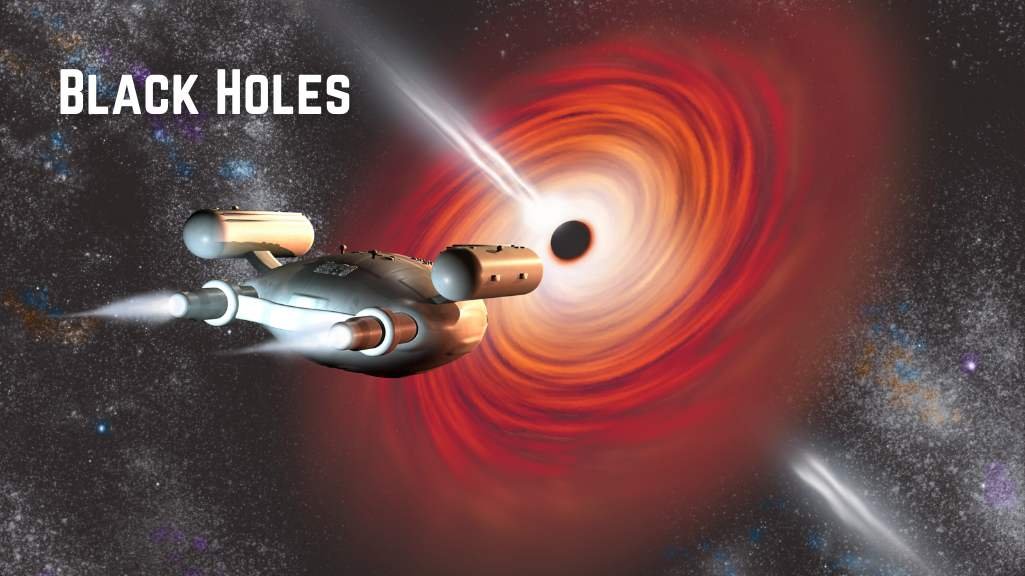Interesting Facts about Black Holes: From Formation to Einstein's Contemporaries
Aaron Alston
. 2 min read
The concept of black holes has been around for several hundred years, ever since scientists took the physical laws that were known at the time and determined what would occur when those laws were stretched to their limits. The development of powerful telescopes and space probes, coupled with the use of video chat technology, has allowed astronomers to collaborate and share real-time observations, data, and insights. Even though these physical laws have been verified through experimentation and found to be accurate, there is no assurance that the scenarios described above ever actually take place in the natural world.

Interesting Information Regarding Black Holes
Stars in their Final Stages of life can Create Stellar Black Holes
The collapse of massive stars results in the formation of black holes because the gravitational pull of a star is strong enough to overcome the natural pressure that the star exerts on itself to keep its shape. A supernova is a type of stellar explosion that occurs when the pressure exerted by a star's nuclear reactions suddenly drops, causing gravity to win out over the star's core and cause it to collapse. This causes the star's outer layers to be ejected into space.
Space and Time around Black Holes are warped as a result of their presence
If you were to fly close enough to a black hole, you would notice that time began to move more slowly and space began to warp as a result of the intense gravitational pull. You would be pulled ever closer, eventually becoming a part of an accretion disk consisting of material in orbit around the universe (stars, gases, dust, planets), which would spiral inward toward the event horizon, also known as the "point of no return." Once you crossed this boundary, gravity would overpower any chance of escape, and you would be super-stretched, or "spaghettified," as you plunged toward the singularity at the center of the black hole.
A black hole is so opaque that it is almost impossible to see
Even light is incapable of escaping the strong gravitational pull of a black hole because of its immense size. Because of this, there are no photons that are reflected, which could then be used to image the black hole as an object. After all, the term "black hole" was given to this phenomenon for a reason. However, this does not mean that we are unable to identify them. Astrophysicists often make use of surrogates, such as the flow of matter and energy extracted from a star that has been ripped apart.
Possibility that Black Holes are Surrounded by a Wall of Fire
One of the challenges posed by Hawking radiation is that it presents physicists with difficult puzzles to solve. Because of the way that this radiation works, the subatomic particles that it creates are entangled, which means that whatever happens to one of them is immediately felt by the other. According to one explanation, the black hole breaks the entangled state of the particles, which, if true, would result in an exorbitant amount of energy being created in accordance with the principles of quantum mechanics.
Albert Einstein does not deserve the credit for the Discovery of the Black Hole
When Albert Einstein was developing his theory of relativity, it took him approximately ten years to work out the mathematics, which he did by employing a challenging form of mathematics known as tensor calculus. He was only able to approximate the solutions to his own equations, and even the most brilliant minds in the scientific community still find mathematics difficult to comprehend. However, the challenge did not deter one of Einstein's contemporaries who was an astronomer named Karl Schwarzschild.
More Stories from
Recent Developments in Space Exploration: Discoveries and Missions
The article highlights recent developments in the field of space exploration, including the discovery of the largest comet.
Artificial Intelligence plays in Assisting Humanity's Exploration of the Solar System
This article discusses the growing importance of artificial intelligence in various aspects of space exploration, including autonomous navigation.
Exploring the Final Frontier: A Glimpse into the World of Space Research
From probing distant galaxies with space telescopes to charting the potential for human life on other planets, this article provides a glimpse into the evolving field of space research.
Connected Cosmos: Embracing the Future of Space Exploration with Video Chat
Discover the potential for human colonization of other planets, breakthrough propulsion systems, and the expansion of our knowledge of the universe through space-based astronomy.
Chandrayaan-3: India's Ambitious Lunar Mission for Scientific Exploration
Chandrayaan-3, India's third lunar mission led by ISRO, aims to overcome past challenges and demonstrate soft landing capabilities on the Moon.








.png?width=40&aspect_ratio=1:1)


